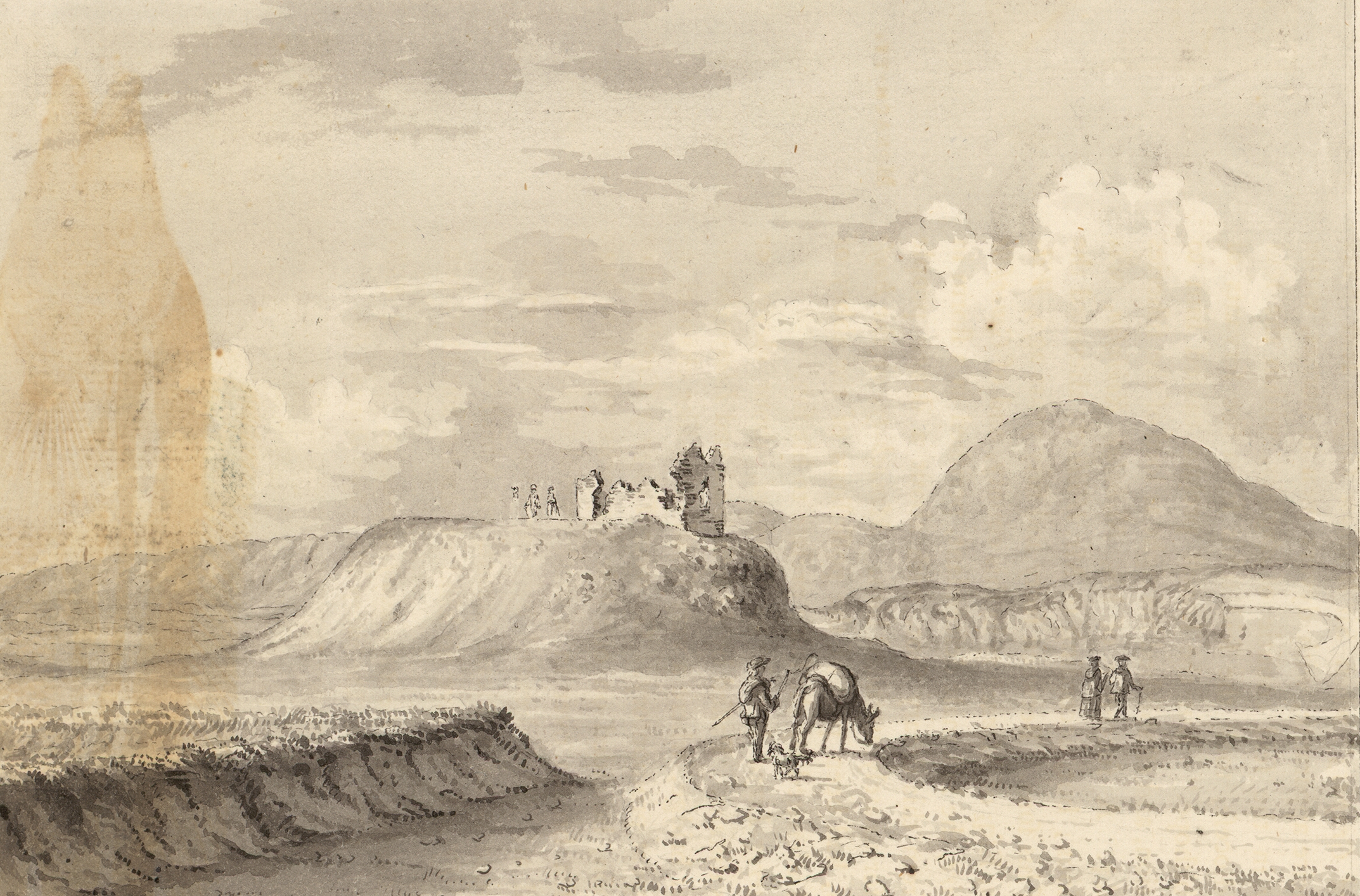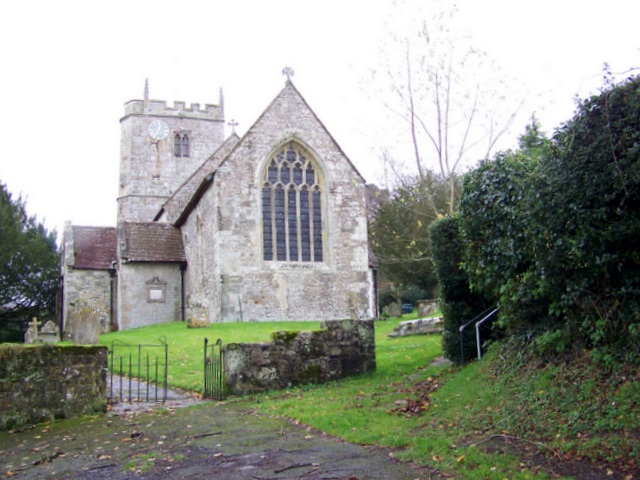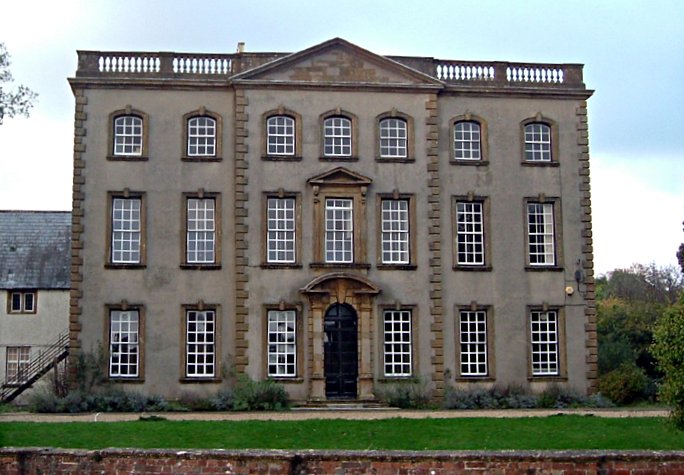|
Sir Edward Seymour, 5th Baronet
Sir Edward Seymour, of Berry Pomeroy, 5th Baronet (1660 or 1663 – 29 December 1740) of Bradley House, Maiden Bradley, Wiltshire was an English landowner and Tory politician. Early life Seymour was baptized on 18 December 1663, the eldest son of the Royalist and Tory politician Sir Edward Seymour, 4th Baronet and his first wife, Margaret Wale. He matriculated at Christ Church, Oxford in 1679. He married his cousin Laetitia Popham, the daughter of Sir Francis Popham, of Littlecote, Wiltshire, and his wife Eleanor Rogers, on 11 August 1685. She was also the niece of his stepmother, also named Letitia Popham, who died in 1714. Career At the 1690 English general election, Seymour was returned as Member of Parliament for West Looe. He stood down at the 1695 English general election. Seymour succeeded his father on 17 February 1708 to the baronetcy and the huge original Bradley House in Wiltshire. At the 1708 British general election, he stood on his own interest as Tory M ... [...More Info...] [...Related Items...] OR: [Wikipedia] [Google] [Baidu] |
Berry Pomeroy
Berry Pomeroy is a village and civil parish in the South Hams district of Devon, England, east of the town of Totnes. The parish is surrounded clockwise from the north by the parishes of Ipplepen, Marldon, Torbay (unitary authority), Stoke Gabriel, Ashprington, Totnes, and Littlehempston. In 2001 its population was 973, down from 1193 in 1901. The main road access is via the A385 road between Paignton and Totnes that runs through the parish, south of the village. History Berry Pomeroy was the centre of the large Feudal Barony of Berry Pomeroy, which was held at the time of the Domesday Book (1086) by Ralph de Pomeroy. The Pomeroy family retained the barony until 1547. William of Orange is said to have held his first parliament at Parliament Cottage in Longcombe within the parish, after landing at Brixham at the start of the Glorious Revolution in November 1688. He was afterwards entertained at Berry Pomeroy Castle by Sir Edward Seymour, 3rd Baronet. Between 1681 and 1834 the ... [...More Info...] [...Related Items...] OR: [Wikipedia] [Google] [Baidu] |
Great Bedwyn (UK Parliament Constituency)
Great Bedwyn was a parliamentary borough in Wiltshire, centred on Great Bedwyn, which elected two Members of Parliament (MPs) to the House of Commons from 1295 until 1832, when the borough was abolished by the Great Reform Act. Members of Parliament 1295–1640 1640–1832 Notes References *Robert Beatson''A Chronological Register of Both Houses of Parliament''(London: Longman, Hurst, Res & Orme, 1807) *D Brunton & D H Pennington, ''Members of the Long Parliament'' (London: George Allen & Unwin, 1954) *''Cobbett's Parliamentary history of England, from the Norman Conquest in 1066 to the year 1803'' (London: Thomas Hansard, 1808) viInternet Archive* J Holladay Philbin, ''Parliamentary Representation 1832 – England and Wales'' (New Haven: Yale University Press, 1965) *Henry Stooks Smith, ''The Parliaments of England from 1715 to 1847'' (2nd edition, edited by FWS Craig – Chichester: Parliamentary Reference Publications, 1973) * * {{Cite journal , last=Ward , first=J ... [...More Info...] [...Related Items...] OR: [Wikipedia] [Google] [Baidu] |
Duke Of Somerset
Duke is a male title either of a monarch ruling over a duchy, or of a member of royalty, or nobility. As rulers, dukes are ranked below emperors, kings, grand princes, grand dukes, and sovereign princes. As royalty or nobility, they are ranked below princess nobility and grand dukes. The title comes from French ''duc'', itself from the Latin '' dux'', 'leader', a term used in republican Rome to refer to a military commander without an official rank (particularly one of Germanic or Celtic origin), and later coming to mean the leading military commander of a province. In most countries, the word ''duchess'' is the female equivalent. Following the reforms of the emperor Diocletian (which separated the civilian and military administrations of the Roman provinces), a ''dux'' became the military commander in each province. The title ''dux'', Hellenised to ''doux'', survived in the Eastern Roman Empire where it continued in several contexts, signifying a rank equivalent to a capta ... [...More Info...] [...Related Items...] OR: [Wikipedia] [Google] [Baidu] |
Kent
Kent is a county in South East England and one of the home counties. It borders Greater London to the north-west, Surrey to the west and East Sussex to the south-west, and Essex to the north across the estuary of the River Thames; it faces the French department of Pas-de-Calais across the Strait of Dover. The county town is Maidstone. It is the fifth most populous county in England, the most populous non-Metropolitan county and the most populous of the home counties. Kent was one of the first British territories to be settled by Germanic tribes, most notably the Jutes, following the withdrawal of the Romans. Canterbury Cathedral in Kent, the oldest cathedral in England, has been the seat of the Archbishops of Canterbury since the conversion of England to Christianity that began in the 6th century with Saint Augustine. Rochester Cathedral in Medway is England's second-oldest cathedral. Located between London and the Strait of Dover, which separates England from mainla ... [...More Info...] [...Related Items...] OR: [Wikipedia] [Google] [Baidu] |
Bromley
Bromley is a large town in Greater London, England, within the London Borough of Bromley. It is south-east of Charing Cross, and had an estimated population of 87,889 as of 2011. Originally part of Kent, Bromley became a market town, chartered in 1158. Its location on a coaching route and the opening of a railway station in 1858 were key to its development and the shift from an agrarian village to an urban town. As part of the suburban growth of London in the 20th century, Bromley significantly increased in population and was Municipal Borough of Bromley, incorporated as a municipal borough in 1903 and became part of the London Borough of Bromley in 1965. Bromley today forms a major retail and commercial centre. It is identified in the London Plan as one of the 13 metropolitan centres of Greater London. History Bromley is first recorded in an Anglo-Saxon charter of 862 as ''Bromleag'' and means 'woodland clearing where Cytisus scoparius, broom grows'. It shares this Old ... [...More Info...] [...Related Items...] OR: [Wikipedia] [Google] [Baidu] |
Somerset
( en, All The People of Somerset) , locator_map = , coordinates = , region = South West England , established_date = Ancient , established_by = , preceded_by = , origin = , lord_lieutenant_office =Lord Lieutenant of Somerset , lord_lieutenant_name = Mohammed Saddiq , high_sheriff_office =High Sheriff of Somerset , high_sheriff_name = Mrs Mary-Clare Rodwell (2020–21) , area_total_km2 = 4171 , area_total_rank = 7th , ethnicity = 98.5% White , county_council = , unitary_council = , government = , joint_committees = , admin_hq = Taunton , area_council_km2 = 3451 , area_council_rank = 10th , iso_code = GB-SOM , ons_code = 40 , gss_code = , nuts_code = UKK23 , districts_map = , districts_list = County council area: , MPs = * Rebecca Pow (C) * Wera Hobhouse ( LD) * Liam Fox (C) * David Warburton (C) * Marcus Fysh (C) * Ian Liddell-Grainger (C) * James Heappey (C) * Jacob Rees-Mogg (C) * John Penrose (C) , police = Avon and Somerset Police ... [...More Info...] [...Related Items...] OR: [Wikipedia] [Google] [Baidu] |
Frome
Frome ( ) is a town and civil parish in eastern Somerset, England. The town is built on uneven high ground at the eastern end of the Mendip Hills, and centres on the River Frome. The town, about south of Bath, is the largest in the Mendip district of Somerset and is part of the parliamentary constituency of Somerton and Frome. The population was 28,559 in 2021. Frome was one of the largest towns in Somerset until the Industrial Revolution, and was larger than Bath from AD 950 until 1650. The town first grew due to the wool and cloth industry; it later diversified into metal-working and printing, although these have declined. The town was enlarged during the 20th century but retains a large number of listed buildings, and most of the centre falls within a conservation area. In the 2011 census, the population was given as 26,203. The town has road and rail transport links and acts as an economic centre for the surrounding area. It provides a centre for cultural and sportin ... [...More Info...] [...Related Items...] OR: [Wikipedia] [Google] [Baidu] |
East Knoyle
East Knoyle is a village and Civil parishes in England, civil parish in Wiltshire, in the south-west of England, just west of the A350 road, A350 and about south of Warminster and north of Shaftesbury, Dorset. It was the birthplace of the architect Christopher Wren, Sir Christopher Wren. The parish includes the hamlets of Holloway, Milton, The Green, Underhill and Upton. History East Knoyle was part of the ancient Hundred (country subdivision), Hundred of Downton, Wiltshire, Downton. Unusually for England, parish registers survive from 1538 and are kept in the Wiltshire and Swindon History Centre.East Knoyle, Wiltshire, England at genuki.org.uk John Marius Wilson's ''Imperial Gazetteer of England and Wales'' (1870–1872) notes two Tithing (country subdivision), tythings in East Knoyle: Milton and Upton. East ... [...More Info...] [...Related Items...] OR: [Wikipedia] [Google] [Baidu] |
Francis Seymour, Of Sherborne, Dorset
Francis Seymour (1697 – 23 December 1761), of Sherborne House, Dorset, was a British landowner and Tory politician, who sat in the House of Commons from 1732 to 1741. Seymour was the second son of Sir Edward Seymour, 5th Baronet and his wife Letitia Popham. In 1728, he succeeded to the estates of his paternal great-uncle Henry Seymour Portman MP, which included Sherborne House. He married on 30 July 1728 his cousin Elizabeth Popham, Dowager Lady Hinchingbrooke (died 20 March 1761), daughter of Alexander Popham, of Littlecote, Wiltshire, MP, and great granddaughter of Colonel Alexander Popham. Seymour was returned as Tory Member of Parliament for Great Bedwyn at a by-election on 29 April 1732. At the 1734 British general election he was elected in a contest as MP for Marlborough on the Bruce interest. He did not stand again in 1741. On all recorded occasions, he voted against the Administration of Walpole. Seymour died on 23 December 1761, leaving two children: *Mary S ... [...More Info...] [...Related Items...] OR: [Wikipedia] [Google] [Baidu] |
Edward Seymour, 8th Duke Of Somerset
Edward Seymour, 8th Duke of Somerset (December 1694 or early 1695 – December 1757) was an English peer and landowner. Family The son of Sir Edward Seymour, 5th Baronet, of Berry Pomeroy, a descendant of Lord Protector Somerset by his first marriage, to Catherine Fillol, Edward Seymour was baptised at Easton Royal, Wiltshire, on 17 January 1694. On 8 March 1716 or 5 March 1717, at Monkton Farleigh, Edward Seymour married Mary Webb (born at Seend on 22 October 1697, died 1 February 1768, and buried at Seend), a daughter of Daniel Webb, of Monkton Farleigh, and wife Elizabeth Somner, daughter of John Somner, of Seend. They had at least five children. His first cousin was Francis Seymour, 1st Marquess of Hertford, son of his uncle Francis Seymour-Conway, 1st Baron Conway Inheritance and titles In December 1740, his father died and Seymour inherited his manors in Wiltshire and Devon. On 11 September 1744, with the unexpected death of George Seymour, Viscount Beauchamp (1725 ... [...More Info...] [...Related Items...] OR: [Wikipedia] [Google] [Baidu] |
Bishop's Hull
Bishop's Hull is a village and civil parish in Somerset, England, situated in the western suburbs of Taunton in the Somerset West and Taunton district. It includes the areas of Rumwell, Rumwell Park, Roughmoor and Longaller and is close to the River Tone. The parish, which includes the hamlet of Netherclay, has a population of 2,975 in total. The A38 and the A3065 pass through it. At the top of Bishop's Hull Hill there is a post office, a village store and a butcher. The village has one primary school, Bishop's Hull Primary School, which was rebuilt in 1978, and an adjoining nursery. History The parish of Hull-Bishop's was part of the Taunton Deane Hundred. Historically the parish included the castle precincts in the centre of Taunton. In June 2008, the village celebrated the 400th anniversary of the church bells with a week of events. Governance The parish council has responsibility for local issues, including setting an annual precept (local rate) to cover the counci ... [...More Info...] [...Related Items...] OR: [Wikipedia] [Google] [Baidu] |
Berry Pomeroy Castle
Berry Pomeroy Castle, a Tudor mansion within the walls of an earlier castle, is near the village of Berry Pomeroy, in South Devon, England. It was built in the late 15th century by the Pomeroy family which had held the land since the 11th century. By 1547 the family was in financial difficulties and sold the lands to Edward Seymour, 1st Duke of Somerset. Apart from a short period of forfeit to the Crown after Edward's execution, the castle has remained in the Seymour family ever since, although it was abandoned in the late 17th century when the fourth baronet moved to Wiltshire. After lying in ruins for a hundred years, in the 19th century the castle became celebrated as an example of the "picturesque", and it became a popular tourist attraction, a status which it retains today—aided by its reputation of being haunted. Between 1980 and 1996 the castle was subjected to extensive archaeological excavations that clarified much of its history and overturned beliefs regarding its a ... [...More Info...] [...Related Items...] OR: [Wikipedia] [Google] [Baidu] |

.jpg)



